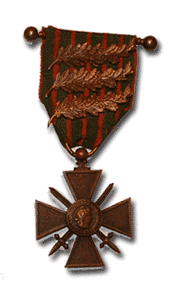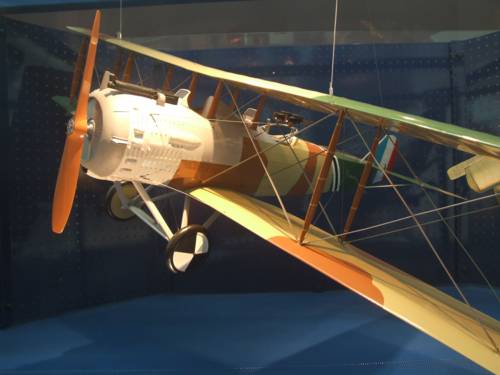United States Air Service
USAS HistorySummary 1917-1918 Lafayette Escadrille
N.124/Spa.124 1st Observation
1st, 12th, 50th, 88th 1st Pursuit Group
27th, 94th, 95th, 147th 1st Bombardment
96th, 11th, 20th 2nd Pursuit Group
13th, 22nd, 49th, 139th 3rd Pursuit Group
28th, 93rd, 103rd, 213th 4th Pursuit Group
17th, 148th, 25th, 141st 5th Pursuit Group
41st, 138th, 638th 3rd Air Park
255th. List of Aces
United States Naval Aviation
US Naval AviationUnited States Marine Corps Aviation
US Marine AviationAircraft
 Nieuport 28
Spad VII
Spad XIII
Fokker Dr.1
Albatros D.Va
Fokker D.VII
Nieuport 28
Spad VII
Spad XIII
Fokker Dr.1
Albatros D.Va
Fokker D.VII
Website: Atlanta SEO
E-mail us

1st Observation Group
The 1st Observation Group was made of the 1st and 12th aero squadrons - both of which were equipped with French made Salmson two seat airplanes. The aircraft were equipped with Salmson engines, but the engines were proble-matic and often hadn't been inspected prior to delivery. The 1st aero squadron was the first American air unit to ever see action being the one which served under John J. Pershing while chasing Pancho Villa into Mexico in 1916.

Salmson SA2 - the main type of observation aircraft (in French colors)
While pursuit squadrons had 18 pilots, the observation squadrons had 18 pilots and 18 observers. Other equipment included a radio and camera for each plane, "twenty light and heavy trucks, five automobiles and ten motor-cycles." The work fell into four categories - all of which were basically reconnaissance in one form or other.
1. Reconnaissance missions were executed at 1,500 to 4,500 meters up to 10 to 12 kilometers behind enemy lines before and during attacks. These were mostly daylight missions done on days of good visibility.
2. Artillery Surveillance was done far lower - from 1,000 to 2,000 meters to spot enemy artillery in order to report their locations by wireless in order to bring in Allied counter-battery fire.
3. The third mission was Infantry Contact - to spot the locations of enemy and friendly infantry back up to the division and corps commanders.
4. Finally the fourth mission type, Artillery Adjustments, or "reglage" to use the French term, was done at 1,000 meters to 2,500 meters. This was basically spotting for friendly artillery fire. Observers would radio back in real time "to the battery such messages as 'one hundred, over,' 'fifty, right' and so on to indi-cate how shells were falling with reference to the objective."
In contrast to modern reconnaissance or even personal photography, in 1918, observation patrols were often happy to come back intact with even 25 photos.
The way the photography work was done was not all that different in principle from the way it is done today. The observation planes were typically specially modified versions of standard airplanes. Box like panels would be cut in the lower side of the fuselage. These panels were fastened with quick lock fasteners which allowed the panels to be removed easily. The cameras - some capable of handling up to 50 centimeter (!) negatives - were loaded in to the aircraft, and then the panels fastened again. After takeoff, the observation plane or planes - which was usually escorted by a flight or more of pursuit planes whose job on these missions was to do nothing other than the prevent enemy fighters from jumping the observation aircraft - would fly over a pre-designated path. The observation plane would then take a series of overlapping photos with each photo taken directly below the aircraft. The plane would land back in Saints, the panel removed, the box camera removed and then the film would be processed probably on site in one of the tents. The overlapping areas were large enough so that the photos could be lined up to make a contiguous collage.
The individual photos were filed in the observer's room in "pigeon holes" - 8.5" x 10" x 2" boxes which corres-ponded to the X Y coordinates and represented a square kilometer on a master map.
At times, the aircraft would fly over known or suspected artillery positions trying to get an accurate fix on exactly where the German artillery units were. Once this was known, it was a relatively simple matter of bringing counter-battery fire to bear although they had to note precise coordinates, and then use short range on board radios to trans-mit the information back to the ground in real time. If the Germans artillery units saw the observation planes com-ing, they would usually stop firing in order to remain hidden from both the eyes and photographs of the observers. When that was the case, the observation planes would continue on, turn 180 degrees, drop dramatically in altitude to 200 meters or so, then return to try to catch the German artillery units by surprise. They would often turn up the German artillery units.
The bad news was that such missions involved facing anti-aircraft fire, avoiding artillery crossfire from enemy and friendly artillery and, of course, enemy fighter planes. Infantry was prone to fire at passing planes without necessarily realizing if they were enemy or friendly.
On October 23rd, the 88th Observation Squadron was tasked to send one Salmson to take photos past German lines to take 40 to 50 photos to document photograph German machine gun and artillery emplacements. The Salmson was to be escorted by two additional Salmson planes from the 88th. - piloted by Lt. Sidney Grant and Lt. Fletcher McCordick They were escorted by five Spad XIIIs - probably from the 2nd Pursuit Group. The aircraft flew past Dun-sur-Meuse when they were pounced upon by seven Fokkers. Three of the Spads peeled off to meet them. From Dun-sur-Meuse, the Salmsons started taking their photos when two more formations of German fighters came to meet the Americans. One formation didn't engage, but the other one consisting of seven zebra-striped Pfalz fighters zoomed in for a fight. The planes were tangling over Aincreville by now. The Americans shot down three of the Pfalz fighters without losing any of their own. However, all of the American fighters were hit repeatedly. And Grant's Salmson was so badly shot up that it later crashed later after crossing back over American lines. Still, Captain Babcock's Salmson made it back safely and, upon landing, the photos that were developed were forwarded to Army Headquarters and used for planning further operations. Lt. Fletcher was recommended for a Distinguished Service Cross. It was an important mission and resulted in quite a success against the odds.
It was probably the first time in the history of American aviation that an American formation had been able to take successful pictures while menaced or attacked by more than twenty planes.
These photos would come in very handy for the attacks that started two days later in the Meuse-Argonne offensive. A mission such as this which allowed intelligence to know where different machine guns and artillery were located may have saved hundreds or even thousands of lives.
Learn more:
1st Observation Group,
1st Pursuit Group,
1st Bombardment Group,
2nd Pursuit Group,
3rd Pursuit Group,
4th Pursuit Group,
5th Pursuit Group and
3rd Air Park.
See the really cool USAS Bases Google Map we've made just for you.
File under:
1st Observation Group - 1st aero squadron, 12th aero squadron, 50th aero squadron
1st Pursuit Group - 27th aero squadron, 94th aero squadron, 95th aero squadron, 147th aero squadron, 185th aero squadron
1st Bombardment Group - 96th aero squadron, 11th aero squadron, 20th aero squadron, 166th aero squadron
2nd Pursuit Group - 13th aero squadron, 22nd aero squadron, 49th aero squadron, 139th aero squadron
3rd Pursuit Group - 28th aero squadron, 93rd aero squadron, 103rd aero squadron, 213th aero squadron
4th Pursuit Group - 17th aero squadron, 25th aero squadron, 148th aero squadron, 141st aero squadron
5th Pursuit Group - 41st Aero Squadron, 138th Aero Squadron, 638th Aero Squadron
3rd Air Park - 255th Aero Squadron
Events/Airshows
 Events/Airshows
Events/Airshows
Pilots/Aviators
 Raoul Lufbery
Raoul LufberyAce of Aces Eddie Rickenbacker
26 victories Quentin Roosevelt
Son of President KIA Frank Luke
18 victories in 17 days Eugene Bullard
1st African Am. Pilot David Ingalls
1st US Navy Ace List of USAS Pilots
Find a Relative American WWI Pilots
Mini bios
USAS Research
 USAS Videos
Reading List
USAS Videos
Reading ListWWI US Aviation Related Links
WWI US Aviation Credits War Wings
by Phillip W. Stewart WWI Maps
Units & Airfields Payne Field
USAS Aerodromes now... USAS Archives
Questions? Need Help? American Expeditionary Forces
WWI Doughboys in France